
Up, out, and over to the British Museum for an early Introduction to the British Museum tour. We were a small group led by a woman who delivered an entertaining account of the origins of the museum from its inception to the edifice we are visiting today. Two young and curious boys were with our group and they became a focus for the guide. The simplicity of her explanations benefitted us all.
The entire tour took place in the Enlightenment rooms. Although our guide acknowledged that the museum’s initial collection was built and sustained on the fortune Hans Sloane acquired through marriage to a Jamaican plantation heiress, she skirted deftly around the taint of riches reaped from slavery, referring to instead to wealth that flowed from the commodity of sugar. Moving on, she explained the context of specifics pieces in a lively and engaging way, especially the copy of the Rosetta Stone and the Holy Thorn Reliquary.
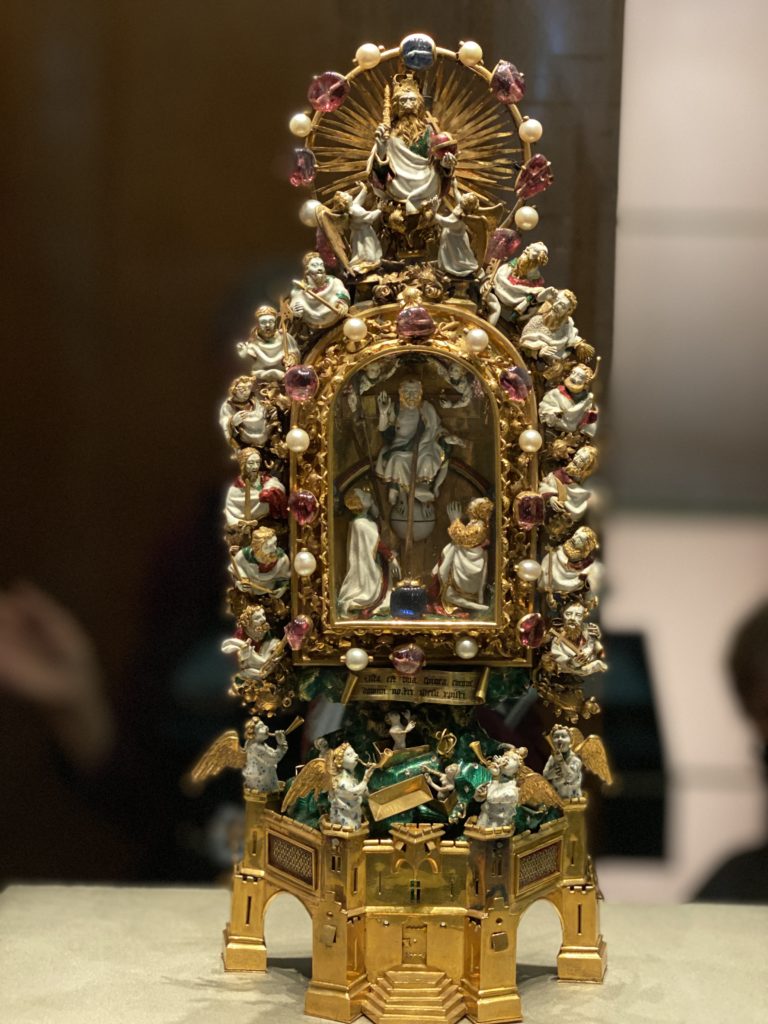
At the end of the tour she pointed out some vintage postcards collected in North Africa
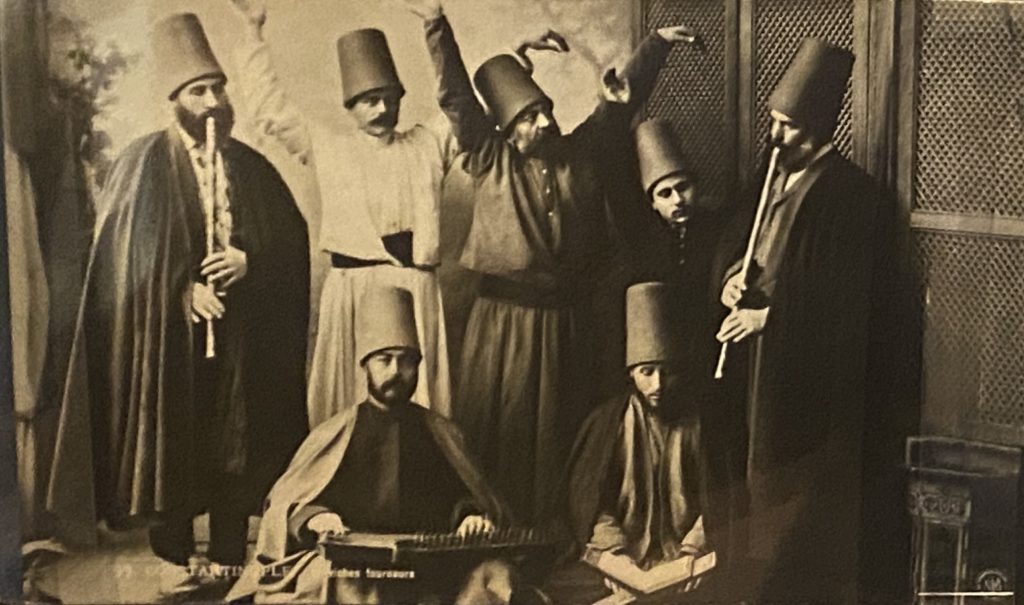
and suggested postcards are soon to become obsolete artifacts in our own time because everyone uses text and emails.
Afterward, I paused for coffee and a croissant and drew the first postcard of the trip. I had to buck the trend.
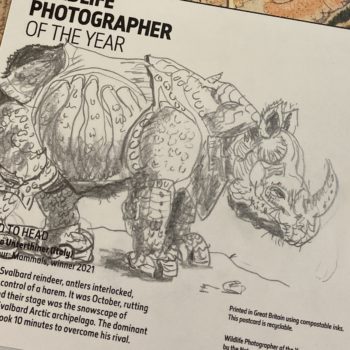
I’m looking forward to other museum tours I’ve booked, especially since audio guides, once a reliable source of context for me, are unavailable (thanks, Covid). Trying to pick up commentary online at different sites was hit or miss. Luckily I have enjoyed listening to A History of the World in 100 Objects since it first aired in 2010, and have listened to it many times over. I was able to recognize objects and find the podcast episodes.
Warren Cup (detail)
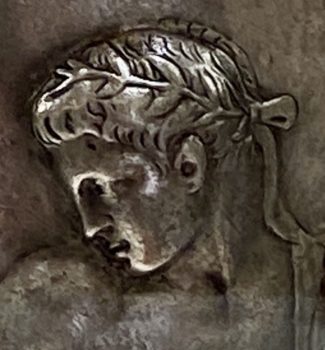
Every bit as exquisitely rendered and sexually explicit as described, it fairly shimmers with a potent homoerotic charge. Lift this cup up and you’d feel these repoussé images of beautiful naked men in the palm of your hand.
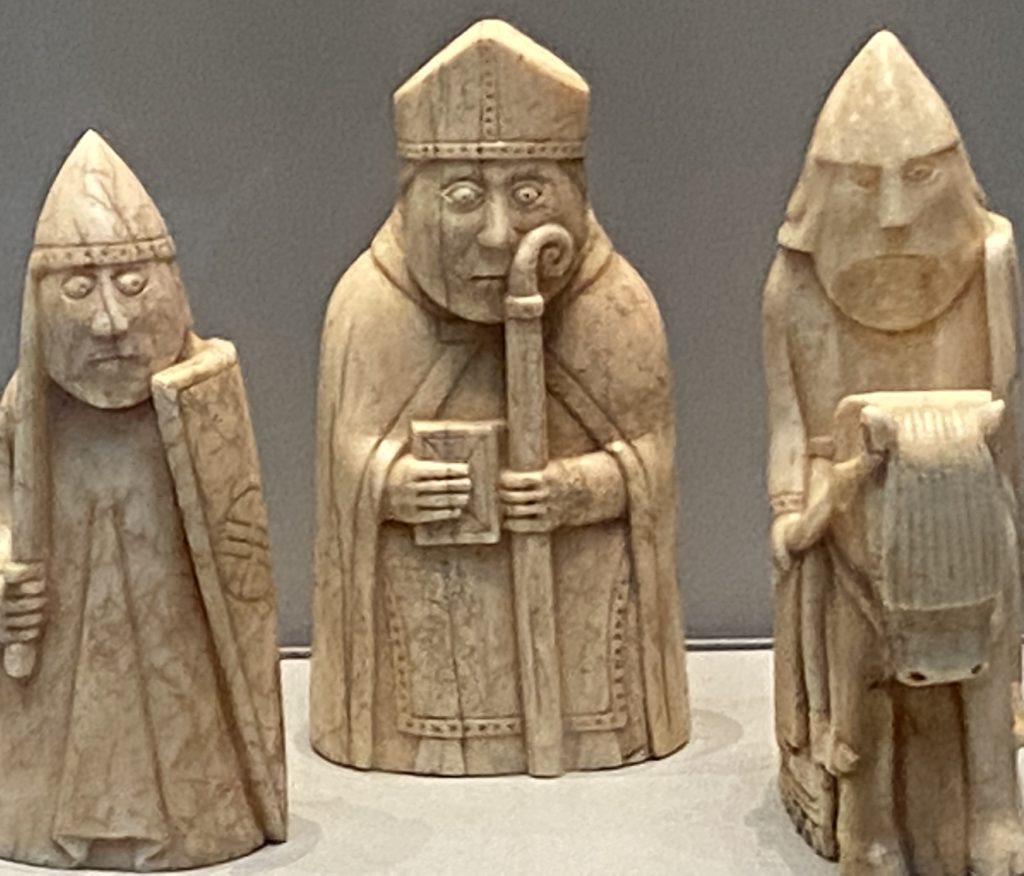
Always referred to as Chessmen, but it’s the queen I can’t forget. She puts me in mind of Lady Macbeth; ambitious, intense, and grim. She’s fighting a battle, recall, and a clever strategy is her only hope. Who to sacrifice next?
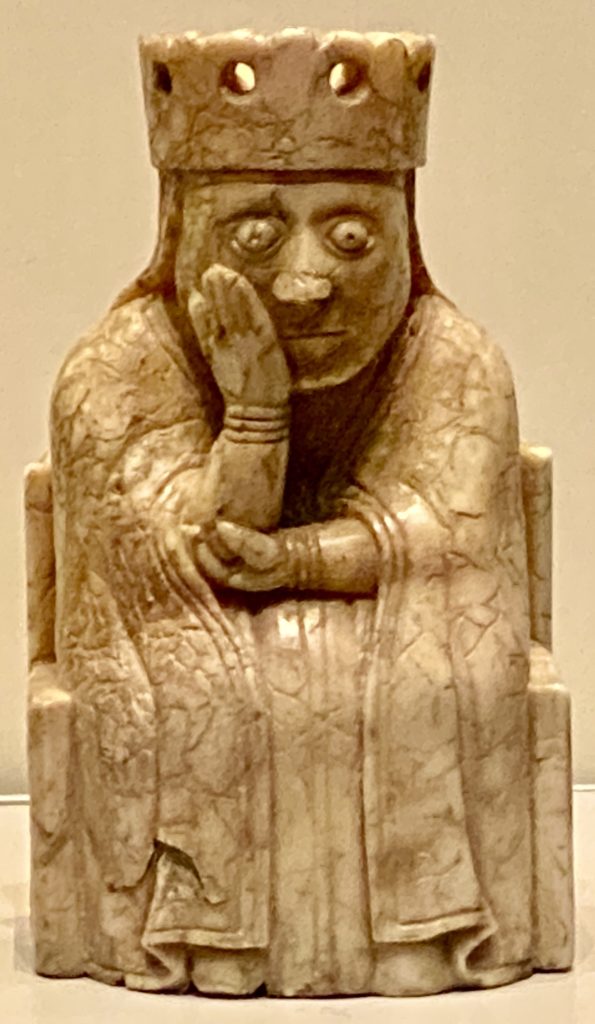
Sutton Hoo Helmet
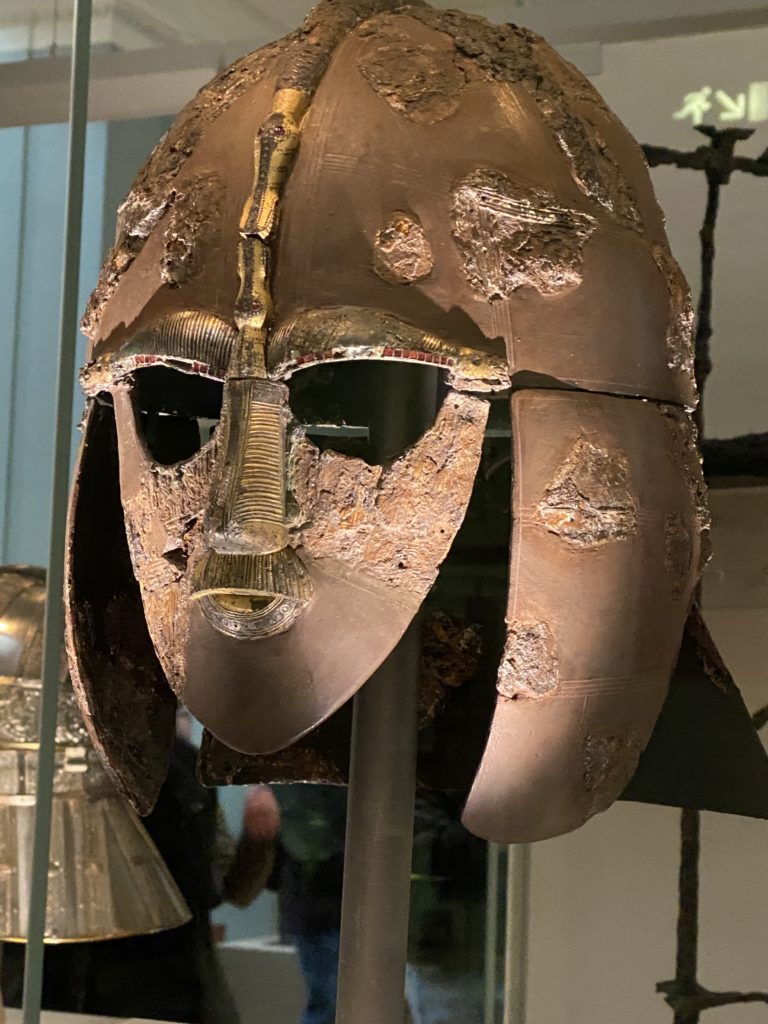
You see at once how this hollow stare captured the public imagination. What made it come alive for me was seeing the bird in flight created by the shapes of nose, eyebrows, and mustache. I relate not so much to the warrior, as I do to his funerary artisan.
It is very different to experience these things directly instead of through a photograph. Three dimensional, fine details in context, and the frequently shocking reality of scale are the reasons I travel thousands of miles for these moments.
A few other things that caught my eye –
A Thomas à Becket reliquary casket. I’m enamored by metalwork caskets and even made a few myself. There are hundreds of these, Becket must have been cut into very small fragments.
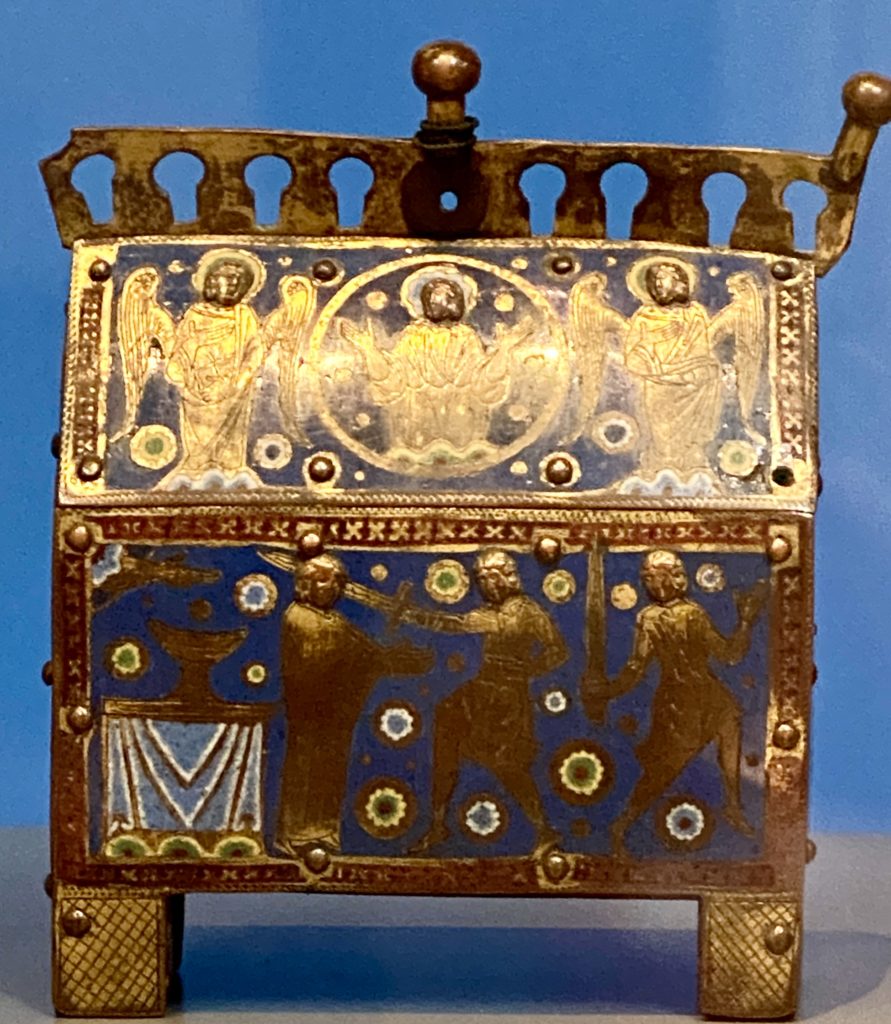
A mother/goddess/bird holding her child.
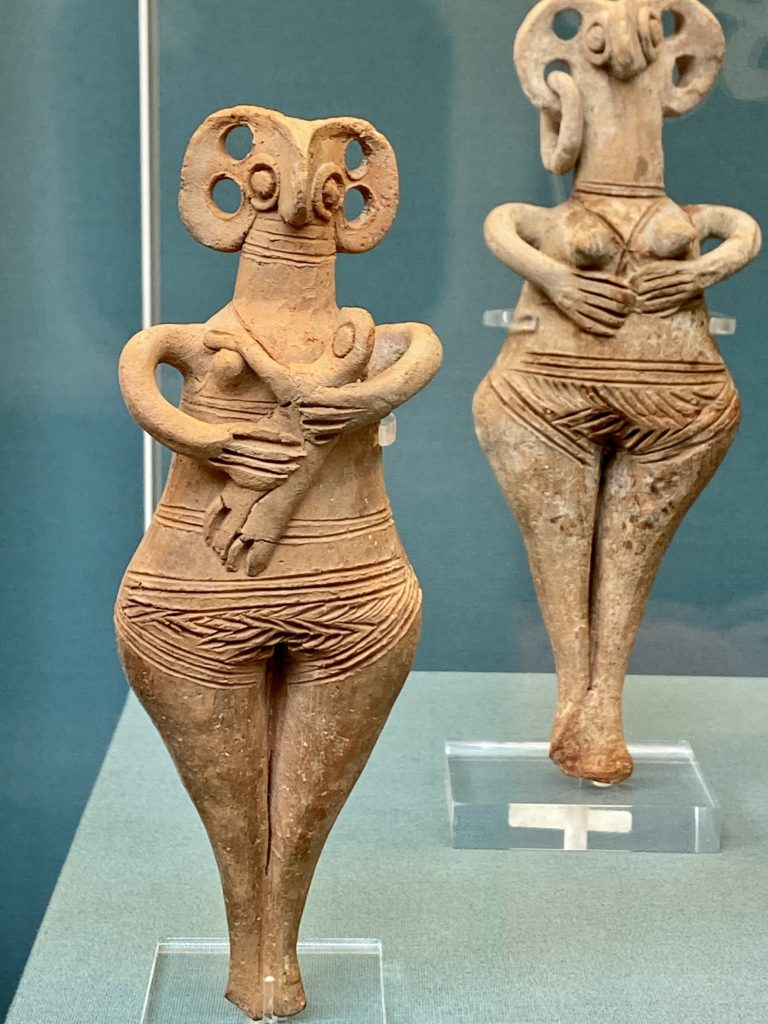
A curse tablet, condemning thieves to suffer, was a private vengeance arranged with the help of the God Mercury. One such curse tablet, inscribed and meticulously folded, read “Honoratus to the holy god Mercury, I complain to your divinity that I have lost two wheels and four cows and many small belongings from my house. I would ask the genius of your divinity that you do not allow health to the person who has done me wrong. Not allow him to lie or sit or drink or eat whether he is a man or woman, whether boy or girl, whether slave or free unless he brings my property to me and is reconciled with me. With renewed prayers, I ask your divinity that my petition may immediately make me vindicated by your majesty.”
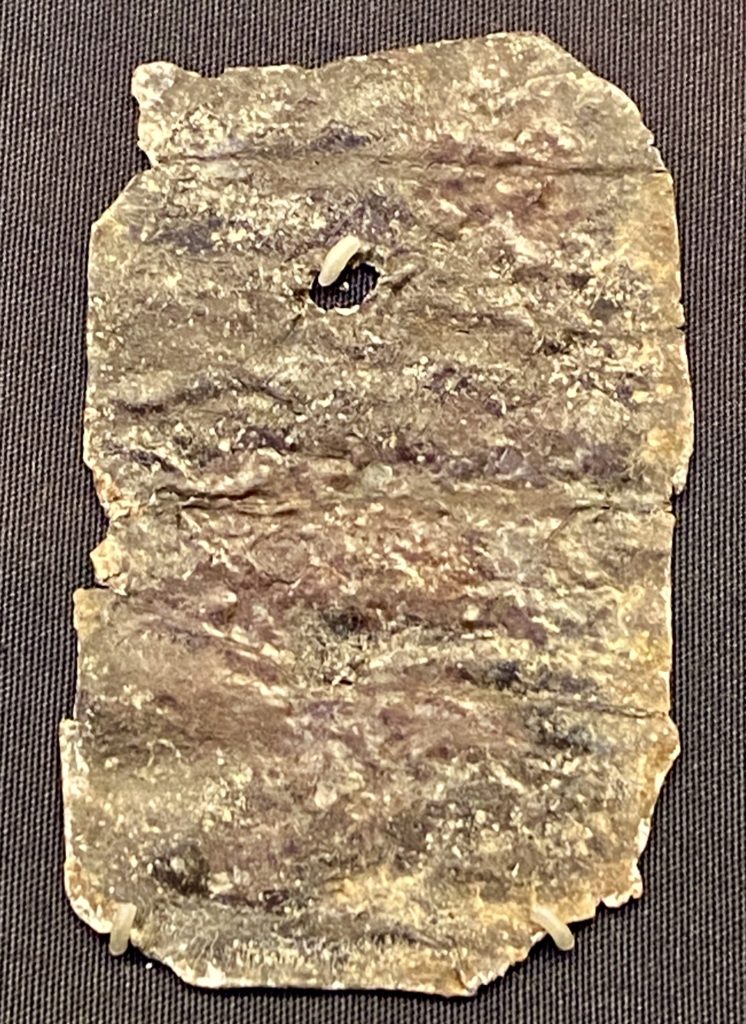
I had a lovely light lunch of Welsh rarebit and crab in the museum’s restaurant.
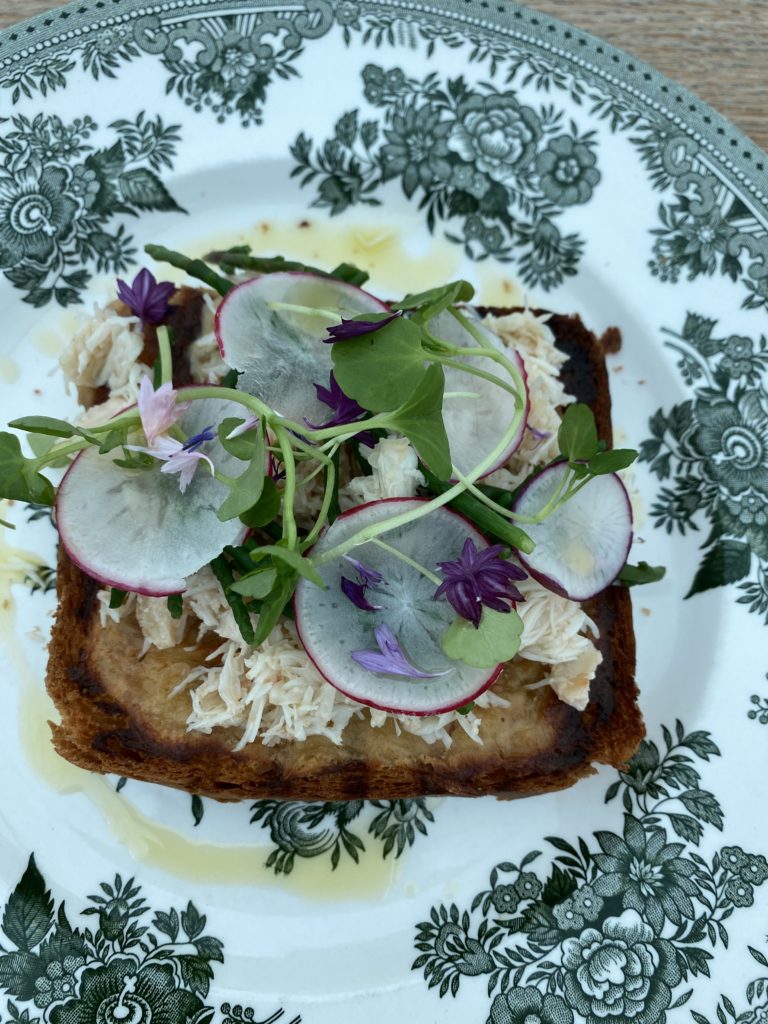
I left in search of a post office, following the path of Google Maps laid out. This is where it led me.
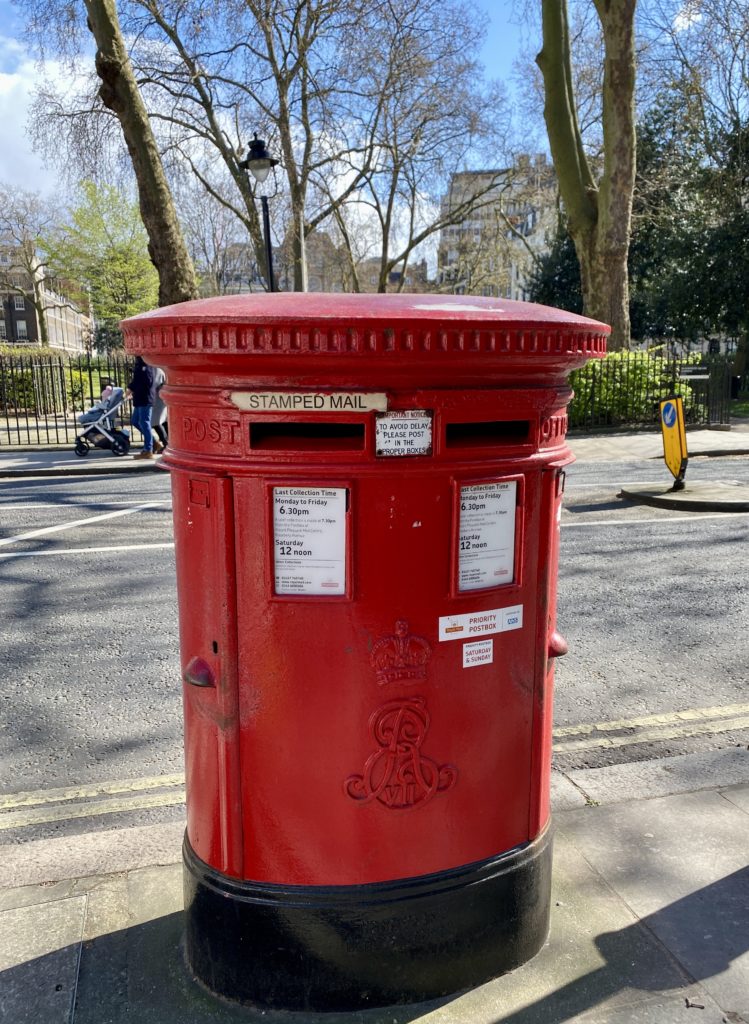
Ha.
Leave a Reply